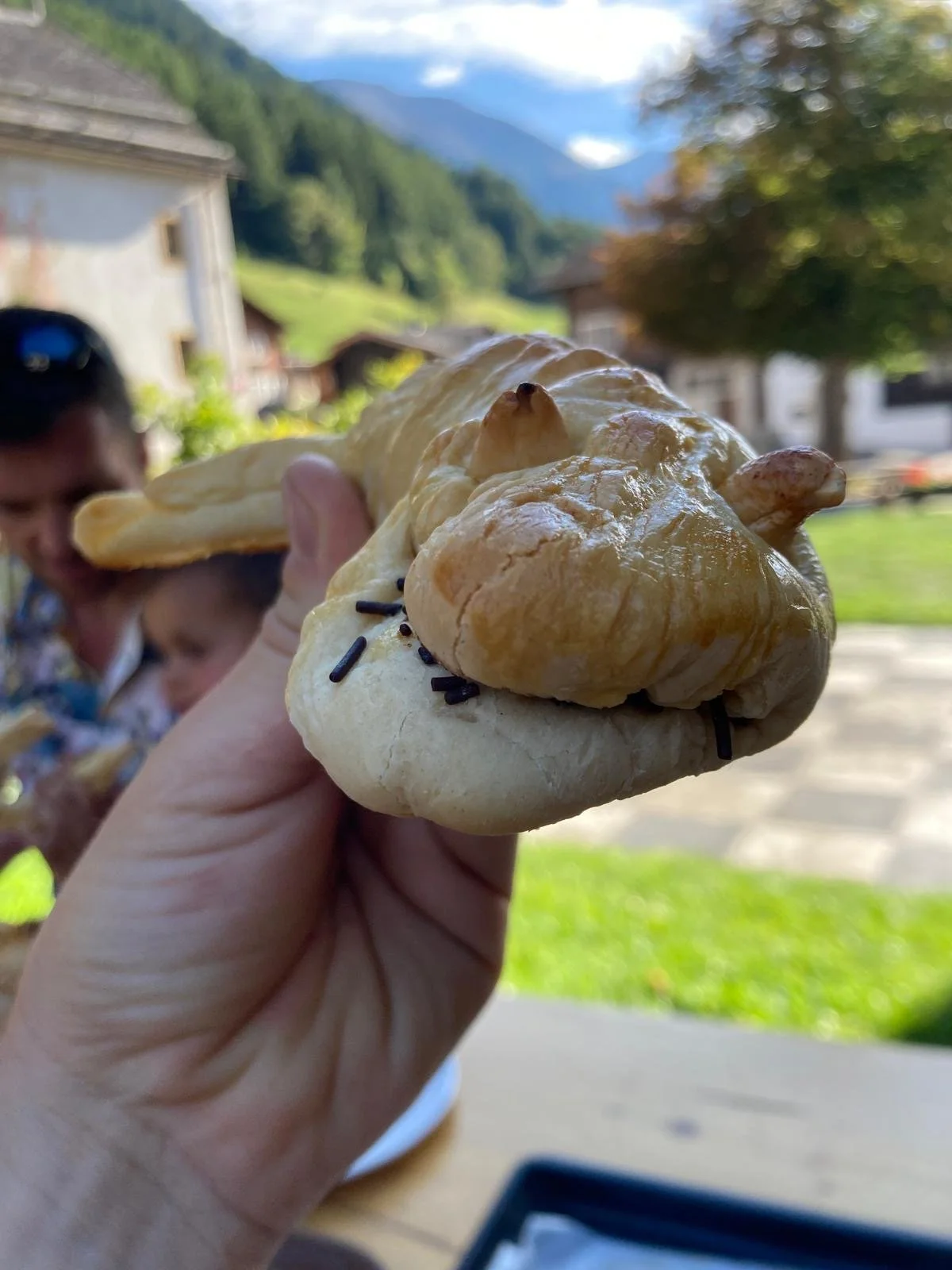English below
Kunst im Walliser Bergdorf Ernen
Kunst gehört nicht nur in die Städte, sondern auch aufs Land. Nicht zur touristischen Standortförderung oder als gezielte Massnahme zur Rettung und Regeneration sozialer Strukturen, sondern als Kunst für sich, die das ästhetische Bewusstsein schärft, gesellschaftliche Fragen verhandelt und die Betrachtenden bewegt. Mit diesem Credo initiierte Josiane Imhasly 2015 die Sommer-Ausstellung ZUR FROHEN AUSSICHT im Walliser Bergdorf Ernen.
Zwischen 2015, 2017 und 2019 wurden jeweils sieben junge Kunstschaffende eingeladen, das Dorf und die umgebende Landschaft über ihre Kunst zu erfassen und zu reflektieren. Die Arbeiten entstanden ausgehend von einem gemeinsamen Aufenthalt im Dorf und wurden an von den Künstlerinnen und Künstlern selbst gewählten Orten im Freien oder in während dieser Zeit öffentlich zugänglichen Räumen eingerichtet. 2023 fand die vierte Ausgabe des Ausstellungsprojekts mit vier künstlerischen Positionen statt, wobei der Dorfkern Ernens erstmals verlassen wurde Teile des Projekts nach Mühlebach, ins ganze Goms und bis nach Sion ausgriffen. 2025, zum zehnjährigen Jubiläum, wurden sieben Kunstschaffende eingeladen: David Dragan, Cosima Grand & Demi Jakob, Flora Klein, Noah Kohlbrenner, Alizé Rose-May und Felix Stöckle.
Neben der Ausstellung finden verschiedene Veranstaltungen statt, die das Potenzial der Vermittlung von Kunst an diesem Ort ausloten. Im Rahmen von Aktionen und Performances wird das Dorf zudem durch ephemere Projekte eingenommen. Auch die Reflexion des eigenen Tuns im Rahmen von Podiumsdiskussionen und Symposien sind ein zentraler Bestandteil der Zur frohen Aussicht.
Die Herkunft der Kunstschaffenden ist wichtig, da sich Fragen nach Heimat und Verwurzelung an diesem Ort aufdrängen. Die Hälfte der eingeladenen Positionen kommen deshalb aus dem (Ober)Wallis, die anderen aus verschiedensten Regionen der Schweiz. So entsteht ein fruchtbarer Dialog zwischen «Hiesigen» und «Üsserschwizern». Eine Affinität zu ländlichen Regionen, ein Interesse für das Ortsspezifische und Soziale und eine Vorliebe für eine künstlerische Praxis, die in den Alltag ausstrahlt, verbindet sie alle.
Art in the mountain village of Ernen
Art is not confined to cities—it also has its place in the countryside. Not as a tool for promoting tourism or as a targeted measure to rescue or regenerate social structures, but as art in its own right: art that sharpens aesthetic awareness, engages with social issues, and moves its viewers. With this credo, Josiane Imhasly launched the summer exhibition ZUR FROHEN AUSSICHT in the mountain village of Ernen in Valais in 2015.
For each of the first three editions – in 2015, 2017, and 2019 – seven emerging artists were invited to experience the village and its surroundings, and to reflect this encounter through their work. The resulting artworks were created during a collective stay in the village of Ernen and were installed either in outdoor locations selected by the artists or in publicly accessible indoor spaces. The fourth edition, in 2023, introduced four artistic positions and, for the first time, expanded beyond the center of Ernen. Parts of the project extended to Mühlebach, the wider Goms region, and even as far as Sion. In 2025, to mark the tenth anniversary, seven artists have been invited: David Dragan, Cosima Grand & Demi Jakob, Flora Klein, Noah Kohlbrenner, Alizé Rose-May, and Felix Stöckle.
Alongside the exhibition, various events will explore the potential for engaging with art in this rural setting. The village becomes a stage for ephemeral projects, performances, and actions. Discussions and symposia are a core part of Zur Frohen Aussicht, offering space for artists to reflect on their work and practice.
The artists’ origins play an important role, with questions about home and belonging naturally emerging in this context. Half of the invited artists come from (Upper) Valais, while the others represent different parts of Switzerland. This mix creates a dynamic dialogue between “locals” and “Üsserschwizern.” What unites them is a shared affinity for rural regions, a strong interest in site-specific and socially engaged art, and a practice that extends into everyday life.






























